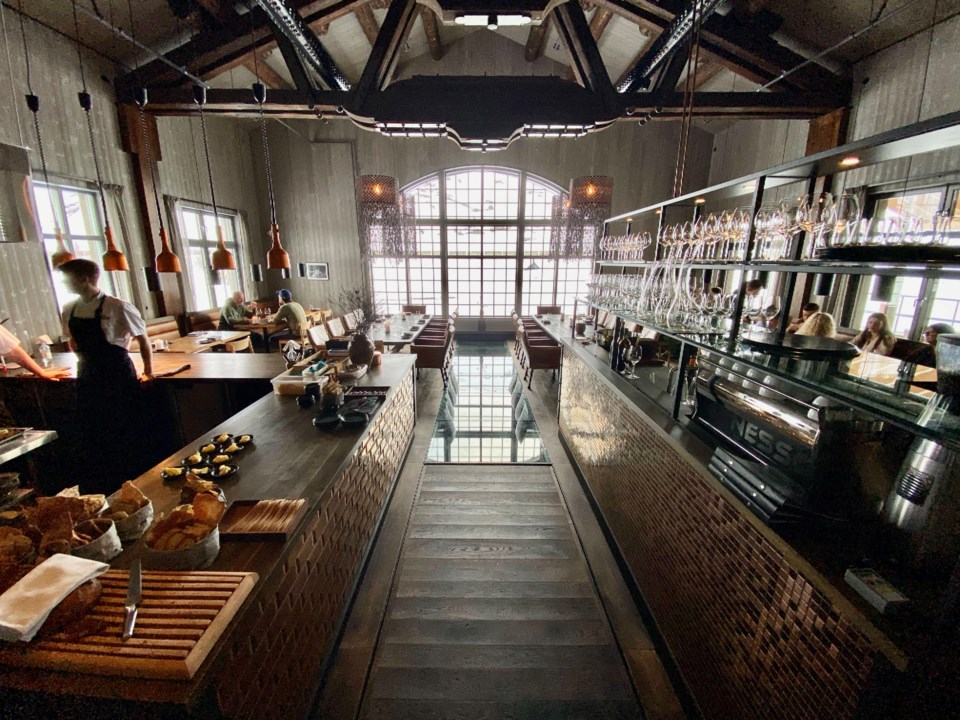In spring, I start thinking about skiing the sweep of Arctic Sweden known as Lappland. And when I think about Lappland, I always think of Niehku.
Remember Fäviken? Magnus Nilsson’s mystical Michelin three-starred eatery in the Swedish hinterlands that reigned culinary king from 2011 to 2019? While it hogged the limelight from other Swedish gastronomes also making magic in the middle of Scandinavian nowhere. Like Patrik “the Sock” Strömsten, who spent 40-some seasons in the wonderfully isolated ski resort of Riksgränsen, high above the Arctic Circle.
“I serve wine at night, ski during the day, and get paid for it,” the congenial ex-mogul skier once told me, putting his vocation in the most prosaic of terms.
In 2005, Strömsten opened Meteorlogen Ski Lodge and Restaurant in Riksgränsen’s oldest building—a restored 1903 customs and weather station where he’d once dwelt in squalor as a young ski bum. The boutique lodge filled from the outset with well-heeled ski-tourers, heli-skiers and their guides. The restaurant, showcasing food of the land, was a sensation, its wine cellar equally so—with Strömsten awarded Sweden’s Sommelier of the Year for a second time in 2014. At that point, Meteorlogen’s success convinced him of an unfulfilled market.
“It showed me how many adventurers like to sleep in a good bed and drink a nice glass of wine,” he’d summed.
With the conversion of historic buildings into world-class lodging and dining facilities suddenly his jam, Strömsten took aim at a disintegrating roundabout that once served the railway that has run daily through Riksgränsen for over a century, delivering iron ore from the town of Kiruna to the port of Narvik on the Norwegian coast. Teaming up with mountain-guide pal Johan “Jossi” Lindblom and retired builder Clas Darvik, the trio opened Niehku Mountain Villa in spring 2018. With 14 rooms, a Michelin-aimed kitchen, and Strömsten’s wine-cellar savvy, it was instantly the planet’s most exclusive and luxurious touring-and-heli-ski lodge, yet still reflected the grassroots vibe of Riksgränsen’s early days as a far-flung spring ski destination. The old roundhouse’s semi-circular stone wall now passes through the lodge’s deck, lobby and kitchen as a fascinating architectural anchor. Interior design draws inspiration from stone and other natural materials, colours and the cultural traditions of Lappland’s Sami people. Throughout, Niehku retains a personal, relaxed ambience.
Of course, Niehku wouldn’t exist but for skiing. Out the front door you can ski-tour or fly into a 5,000-square-kilometre wilderness of more than 60 skiable peaks.
"I’ve guided all over the world, but was always drawn back to these incredible mountains,” reflects Jossi, who oversees the ski product. “I knew we could deliver some of the best heli-skiing and ski-touring imaginable.”
I’ve been to Niehku a few times and the highlight has always been bolting out for a couple of hours of skiing under the midnight-sun the evening we arrive, enjoying chalky snow in warm light. The next day, we’ve usually flown deep into the range, where seemingly endless runs demonstrate how deceptively big the vertical is. I’ve also done touring drops close to Kebnekaise, Sweden’s highest peak, to ski from north-facing cirques of cold, knee-deep snow onto a long, sloping glacier. Grouping up in the sunny valley, temperatures always seemed comfortable as we enjoyed a superb lunch from the Niehku kitchen of something like pork-and-potato soup (eaten with a compostable wooden “spork”) and sandwiches featuring homemade bread and butter; dessert was always the n’est plus ultra of Lappland cuisine—a cloudberry muffin. After a half-dozen runs, we’d head back over the chocolate-chip sweep of Arctic Lappland.
At dinner—always a set menu (unless you have dietary concerns)—we’d enjoy mussels, reindeer, chanterelles, and other delights of northern Scandinavia, learning more of Niehku’s backstory as Strömsten poured wine between courses. He’d met Lindblom in 1993 and the two hit it off, forming a raucous local rock band known for spontaneous nudity. Other hijinks ensued.
“Jossi and I used to boulder on this,” he’d once recalled wistfully, pointing to an old rock wall now inside the restaurant. “We left a few litres of blood there.”
The catalyst for the lodge was Clas, a long-time client of Jossi’s. One day in 2012, with heli-skiing cancelled due to weather, Clas skied off the backside of Riksgränsen and saw the old roundhouse. He immediately suggested to Patrik and Jossi they do something with it—perhaps build a hotel. They said “Sure,” not realizing six years on, that this wild, in-the-moment idea would come to fruition.
With Patrik departing for other projects a few years ago and Jossi remaining as CEO, Niehku is still as unique and exclusive as ever, the award-winning architecture and masterful elements celebrating the past by adding value to historical structures in a modern design context—a plexiglass-covered, converted coal-pit wine cellar in the restaurant’s centre; massive timber amalgams supporting a log-beam roof, and an iron woodstove in the style of a locomotive boiler. It’s also a design that plays to the strengths of the land, where you can watch the midnight sun pool on snowy hillsides without having it pour in through the massive arched windows to violate the dining area’s intimacy. In March, while the sun still sets, you can sit in a glass sauna nursing a branded Niehku beer as Northern Lights streak the sky—a ski experience like no other.
Oh, and the name? No surprise that Niehku means “dream” in the Sami language.




